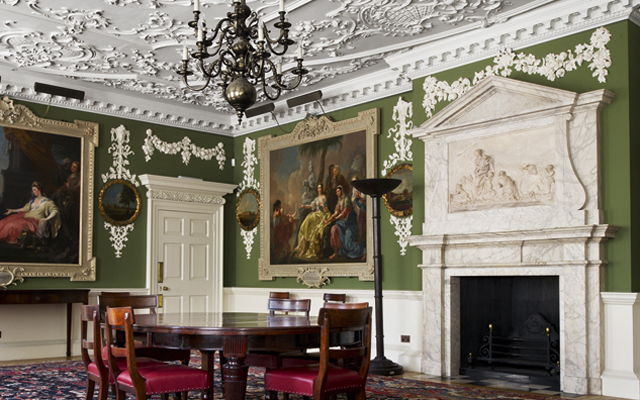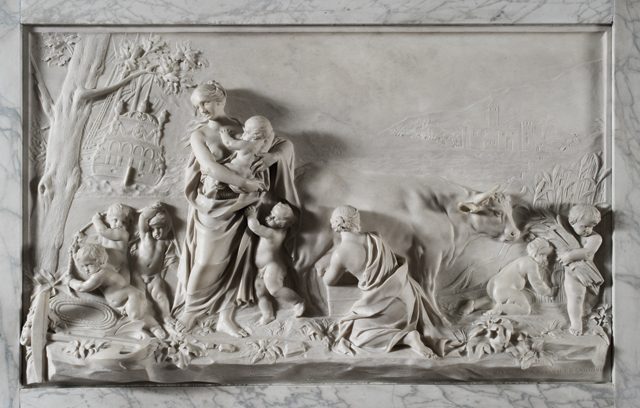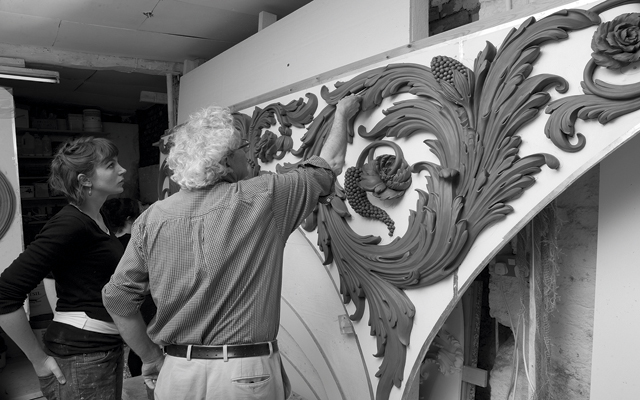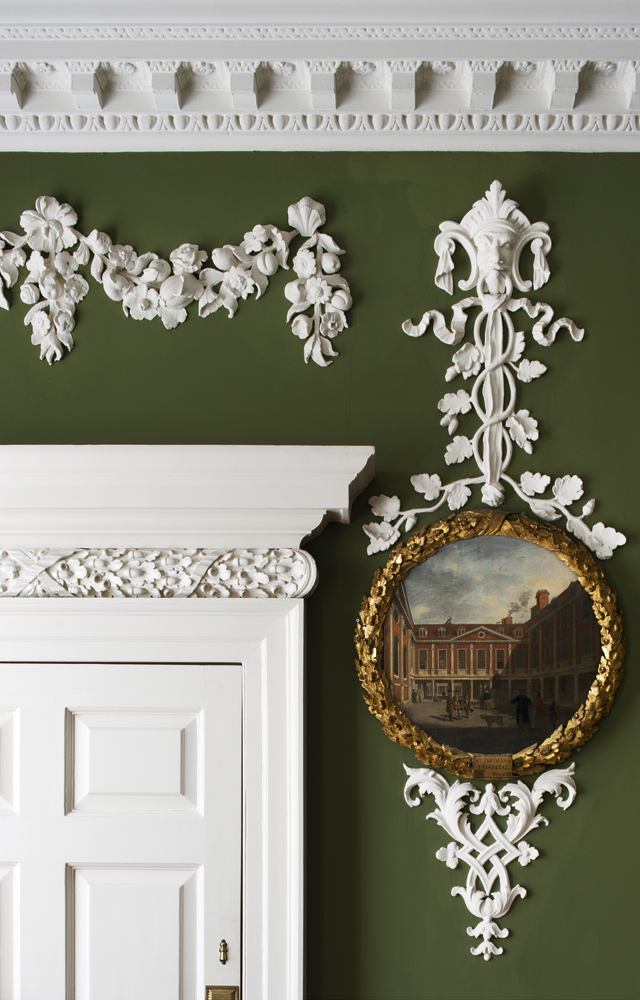Exhibition review: Lines of beauty at the Foundling Museum, London
Jeremy Musson delights in plasterwork, historic and modern.

Plasterwork is possibly one of the most extraordinary and yet underrated artforms in Europe. Modelled stucco was intimately connected with theatrical architectural interiors of the 17th and early 18th centuries—it is perhaps the medium most responsive to the visual imaginings of Baroque and Rococo designers. It relies on the confident, active modelling skills of the sculptor, whose figures and shapes are drawn out of the stucco before the plaster is set. Once formed, stuccowork creates an unforgettable play of light and shade.
The centrality of this art of hand-modelling in both historic and modern revived stucco is one of the main themes of a new exhibition, ‘Lines of Beauty’, which has just opened at the Foundling Museum in London’s Bloomsbury. The museum’s famous 1740s Rococo Court Room provides a focus for the show, with its ceiling by one of the English master plasterers of the mid 18th century, William Wilton. In this fitting setting, the exhibition explores both the history and art of plasterwork through the recent work of Geoffrey Preston, one of the UK’s leading architectural sculptors.
No one with an interest in country houses can have failed to notice the remarkable work that has been produced recently by Mr Preston and his Devon workshop, which he founded in 2000. It includes wall panels of relief at Thornhill in Dorset; a recent new ceiling at Great Fulford in Devon; panels for a new house in Wiltshire designed by George Saumarez Smith; and a ceiling for Kilboy in Ireland, designed by Quinlan and Francis Terry. All of these are explored here through original designs, photographs, casts of details and ceiling panels and the tools used.

Mr Preston’s story is an extraordinary one. He studied sculpture at Hornsey College of Art in the 1970s and trained as a stonemason and carver with the pioneering Robert Baker, for whom he worked at the cathedrals of Exeter and Wells. ‘Prof Baker insisted on using properly trained artists in his conservation work and taught us modelling and drawing, so that carvers could understand the way the traditional artisan worked,’ says Mr Preston, who was later involved in the founding of the leading stone-conservation workshops Nimbus and Cliveden.
Stuccowork, hand-sculpted into mobile flowing forms, arrived in England with Italian speaking sculptors, including the Atari and Lafranchini brothers. They were invited over to work in churches and country houses. As Mr Preston says: ‘Stuccowork had a short and brilliant flowering in this country and has been overlooked since.’
Neo-Classical taste required more shallow relief and the use of repeated motifs that could be more easily cast in moulds. Industrial and technological advances meant that plaster reliefs and decorative detail could be mass-produced. Thus, as hand-modelled stucco became too expensive, the recipes and techniques associated with it also faded away.
The terrible fire at Uppark in 1989 and the National Trust’s brave project to rebuild the house after the fire proved pivotal in the career of Mr Preston. The roof had collapsed and five 18th-century ceilings were shattered inside the house. George Jackson, the UK’s oldest plasterwork company still in operation, reproduced the fine-quality flatwork and mouldings, but it was clear that the skills to re-create its hand-modelled stuccowork had been lost.
Sign up for the Country Life Newsletter
Exquisite houses, the beauty of Nature, and how to get the most from your life, straight to your inbox.
However, as Mr Preston observes: ‘We were able to analyse fallen plaster fragments in detail and study the National Buildings photographic record to help re-create these ceilings, incorporating sections of the original where possible.’ He led the Cliveden Conservation workshop team of sculptors who, over the next 14 months, effectively reinvented the lost art of hand-modelled stuccowork in England.

The restoration at Uppark gave Mr Preston an unrivalled opportunity to study the fundamental geometry of modelled stucco: ‘The semi-circular wreath at the bottom of the corner panels provided the key to the whole ceiling, which is based on seven circles within a circle. The position of each passage of modelling was often governed by the same system… the geometry acts like an invisible skeleton.’
This geometry is reflected in most significant Rococo ceilings, including that of the Court Room of the Foundling Museum (below and top) It was created in the 1740s, but was removed and re-sited when the Foundling Hospital, one of the premier philanthropic projects of 18th-century London, was tragically demolished by a developer in the 1920s. Fortunately, the fine Court Room interior was preserved in a new building, which is now the Foundling Museum.
From that ‘Uppark moment’, Mr Preston has become, in effect, the leading sculptor in stucco in the UK. This exhibition explores the frozen music of the stuccowork that graced the historic English interior and gives a flickering vision of the most inspiring plaster decoration of modern times. ‘Lines of beauty: Rococo plasterwork and the art of Geoffrey Preston’ runs until September 6, at the Foundling Museum, 40, Brunswick Square, London WC1 (020–7841 3600; http://foundlingmuseum.org.uk)

.
-
 ‘It had the air of an ex-rental, and that’s putting it politely’: How an antique dealer transformed a run-down Georgian house in Chatham Dockyards
‘It had the air of an ex-rental, and that’s putting it politely’: How an antique dealer transformed a run-down Georgian house in Chatham DockyardsAn antique dealer with an eye for colour has rescued an 18th-century house from years of neglect with the help of the team at Mylands.
By Arabella Youens
-
 A home cinema, tasteful interiors and 65 acres of private parkland hidden in an unassuming lodge in Kent
A home cinema, tasteful interiors and 65 acres of private parkland hidden in an unassuming lodge in KentNorth Lodge near Tonbridge may seem relatively simple, but there is a lot more than what meets the eye.
By James Fisher